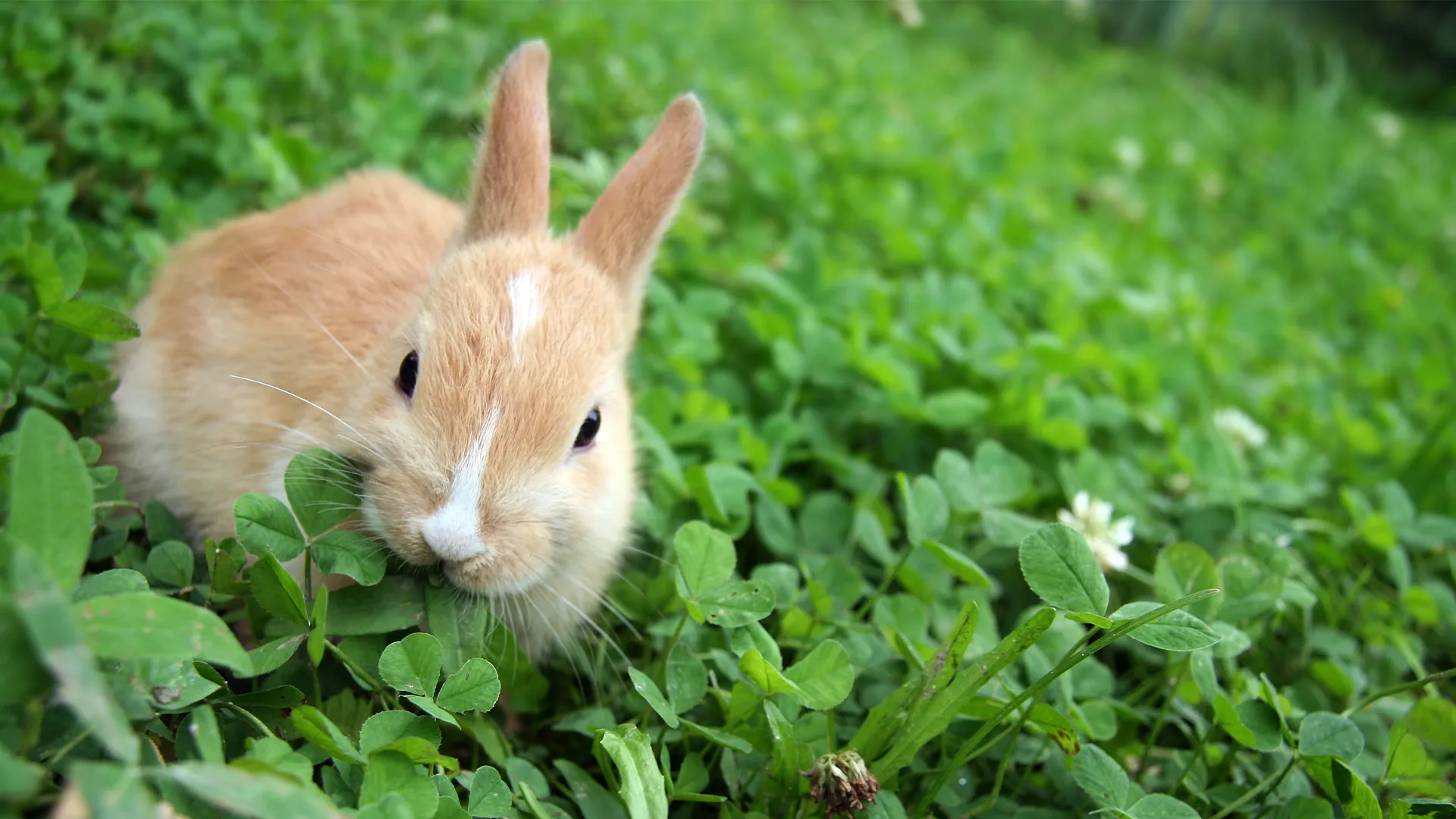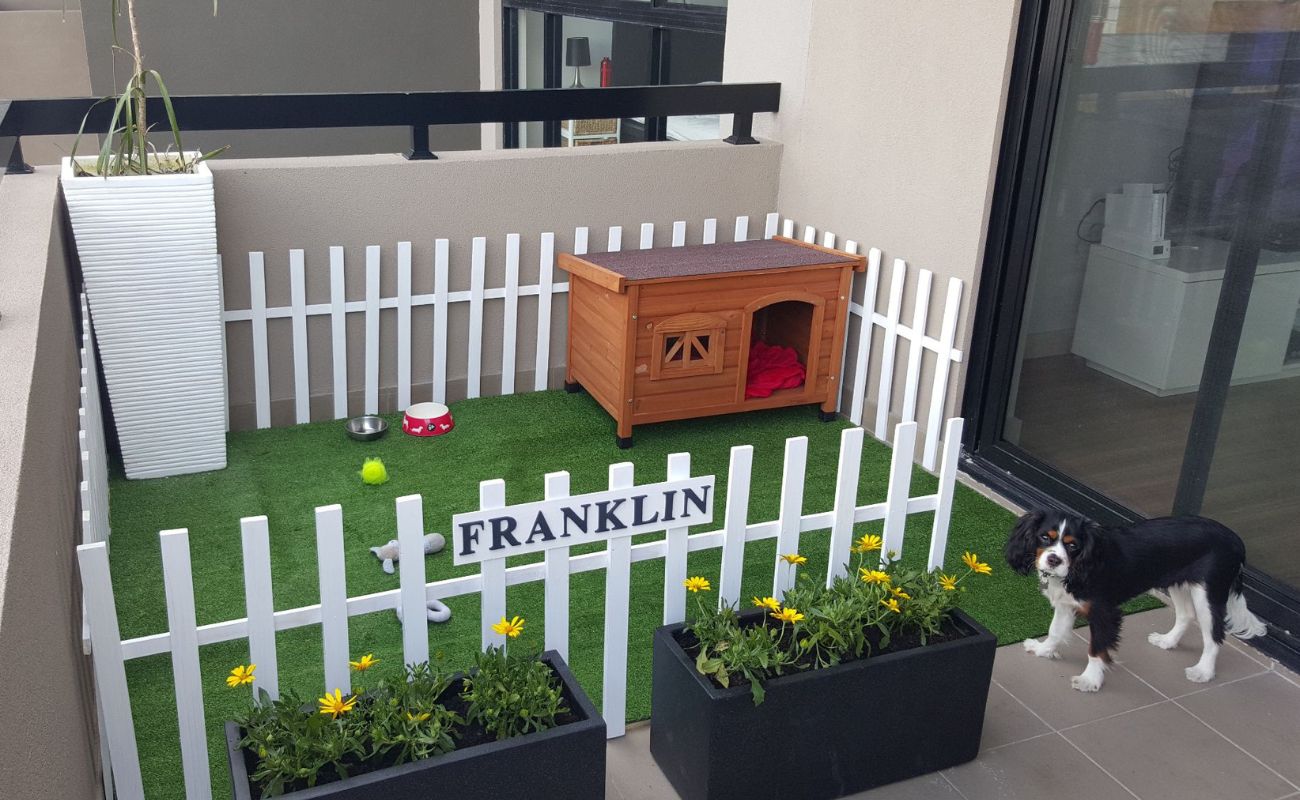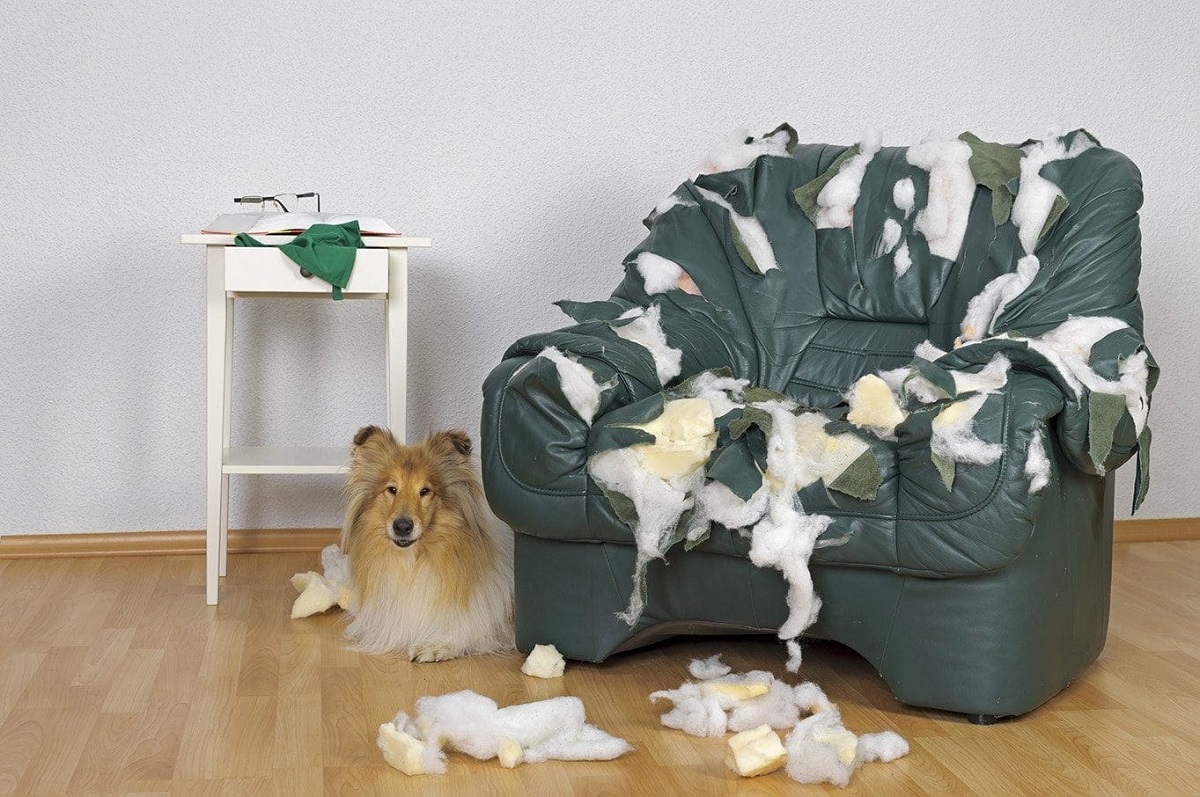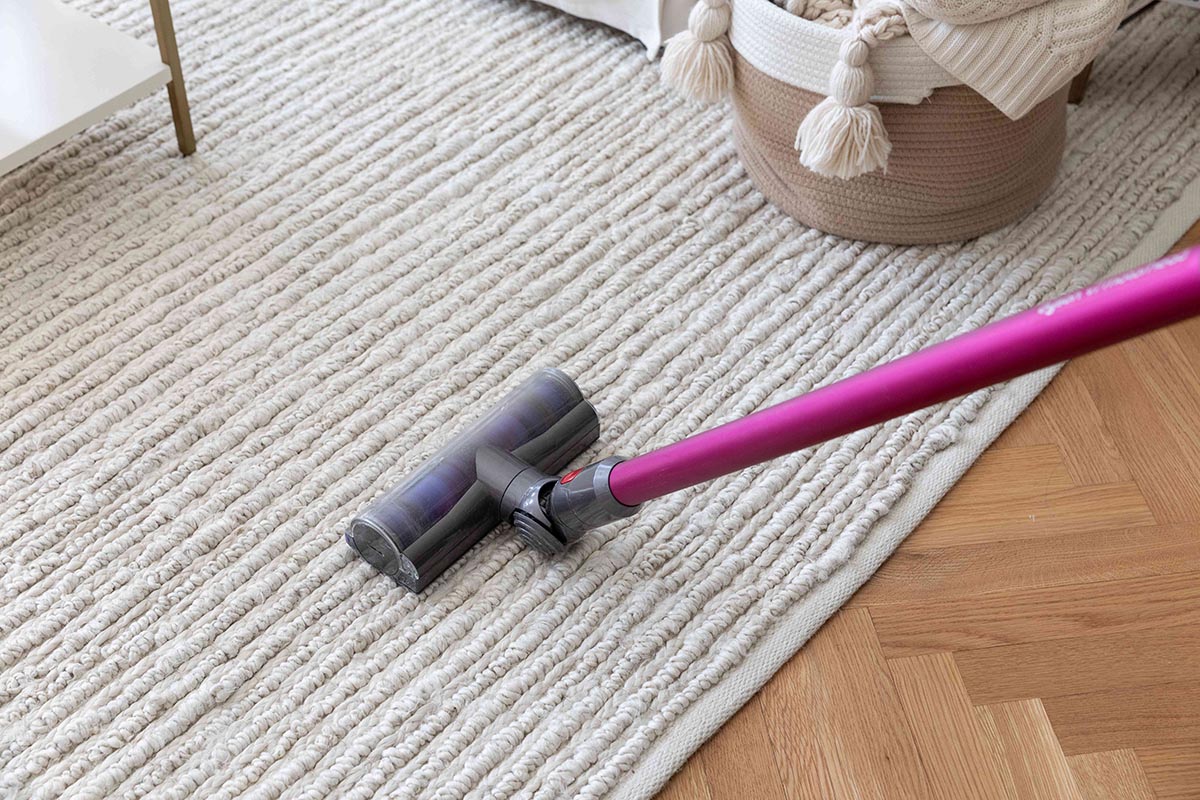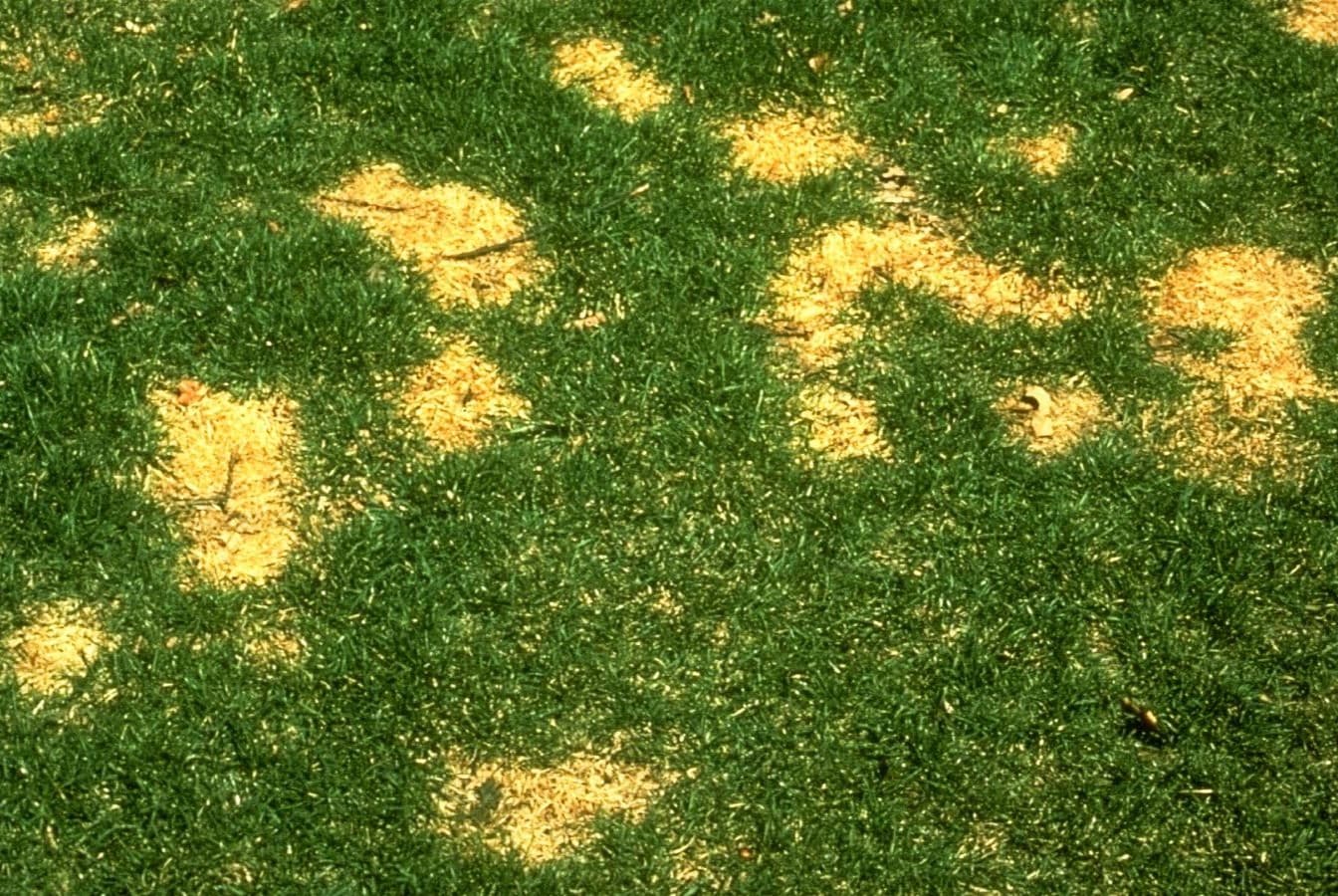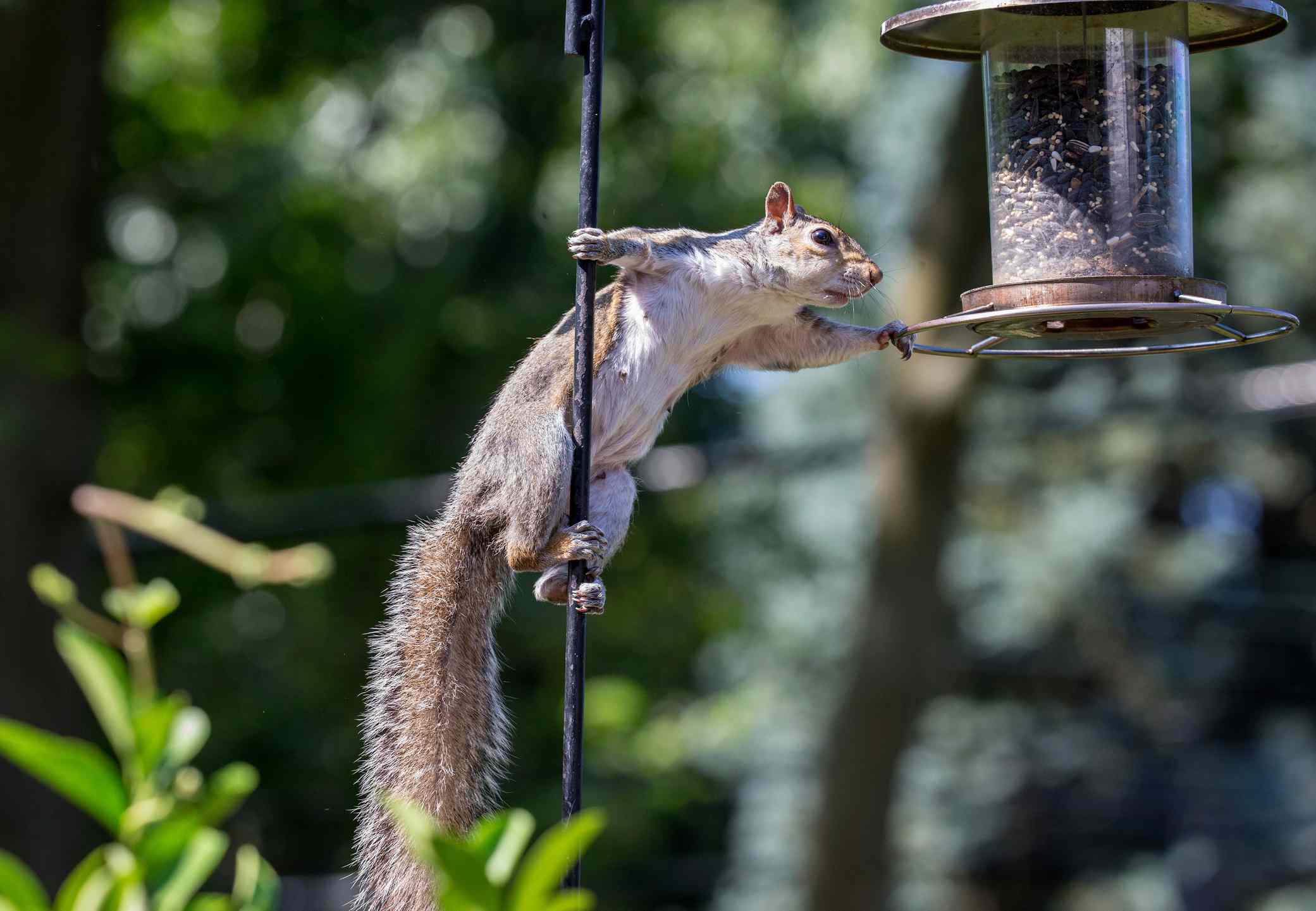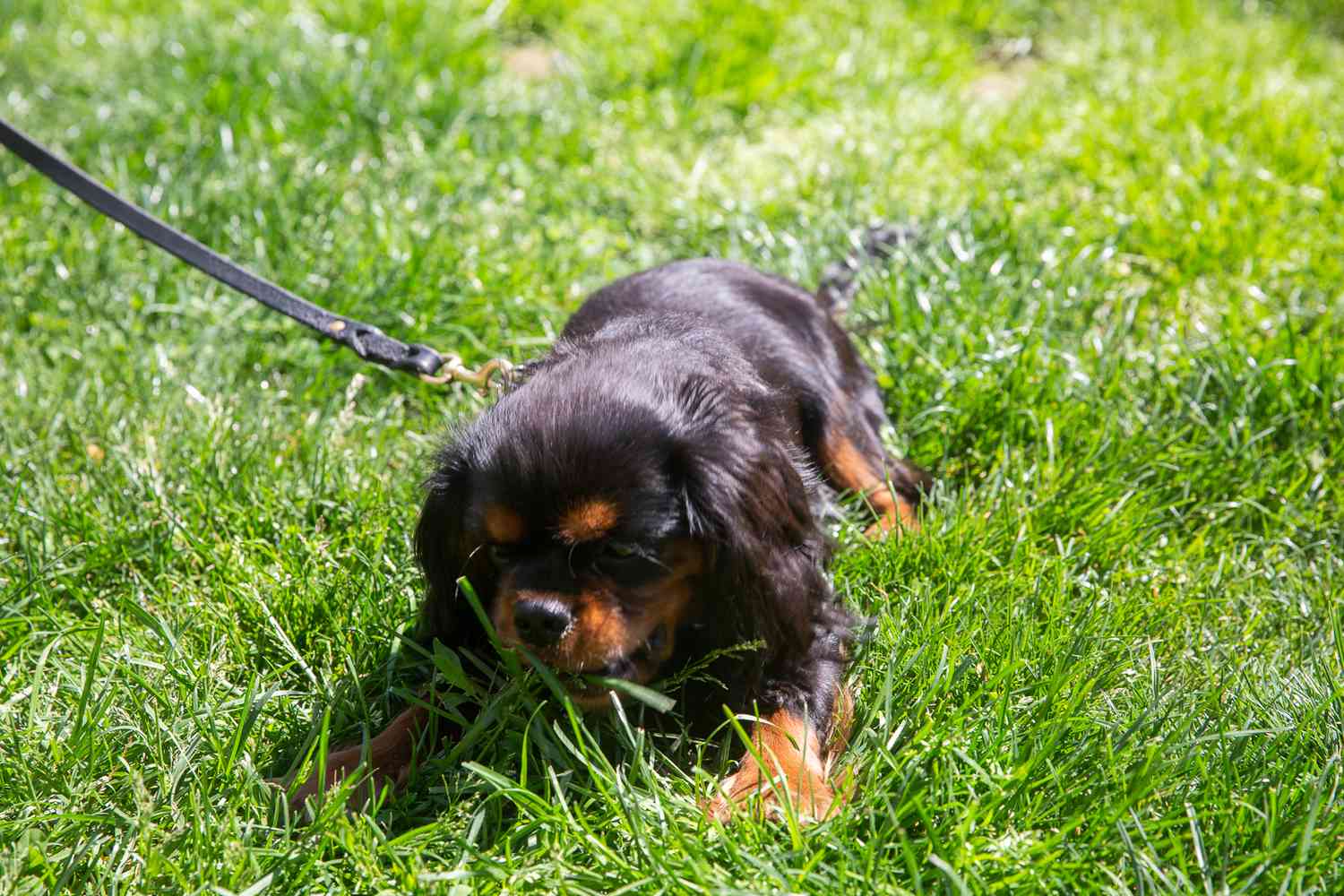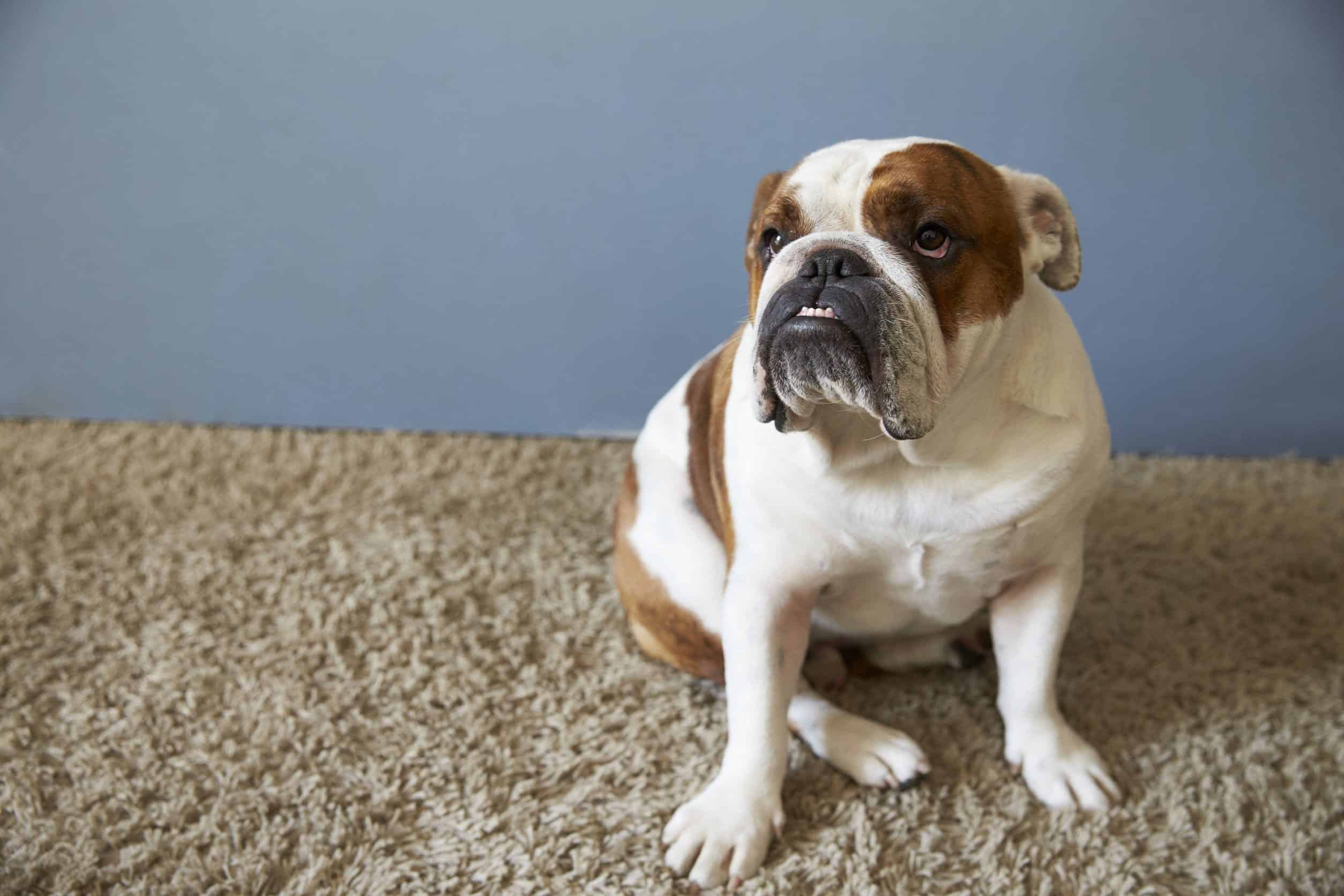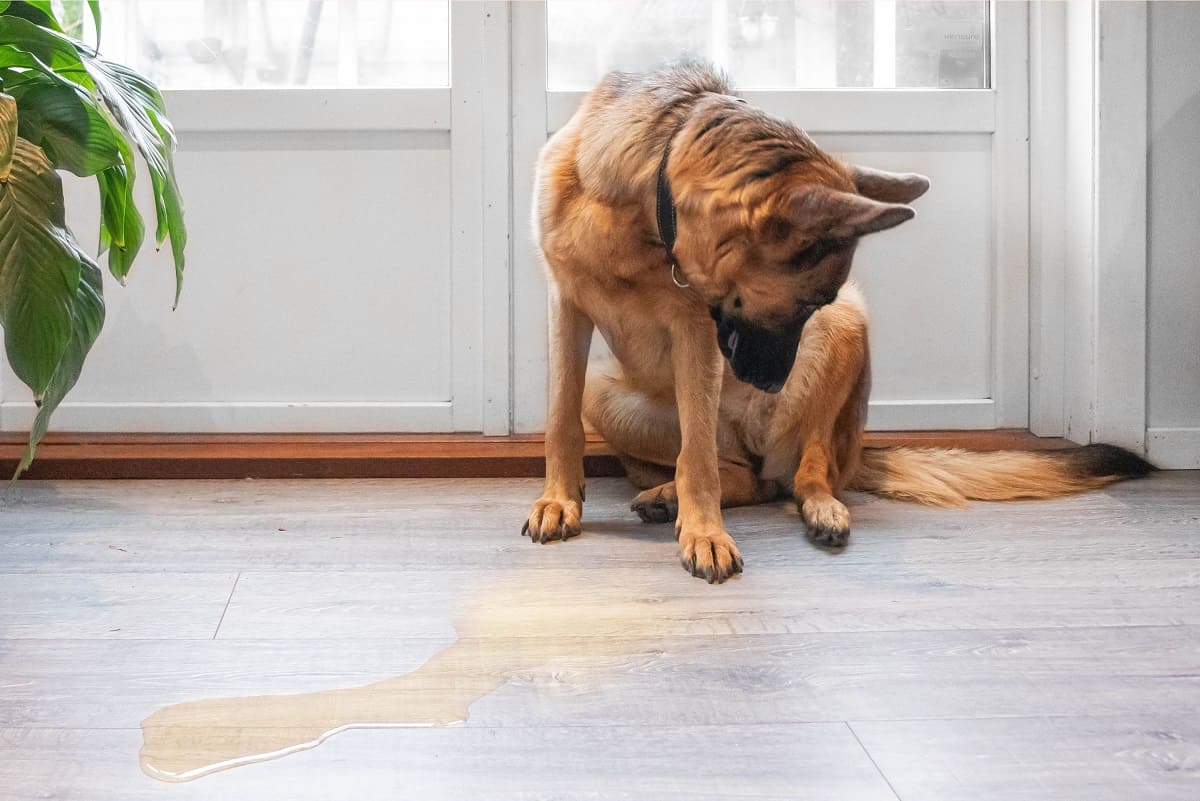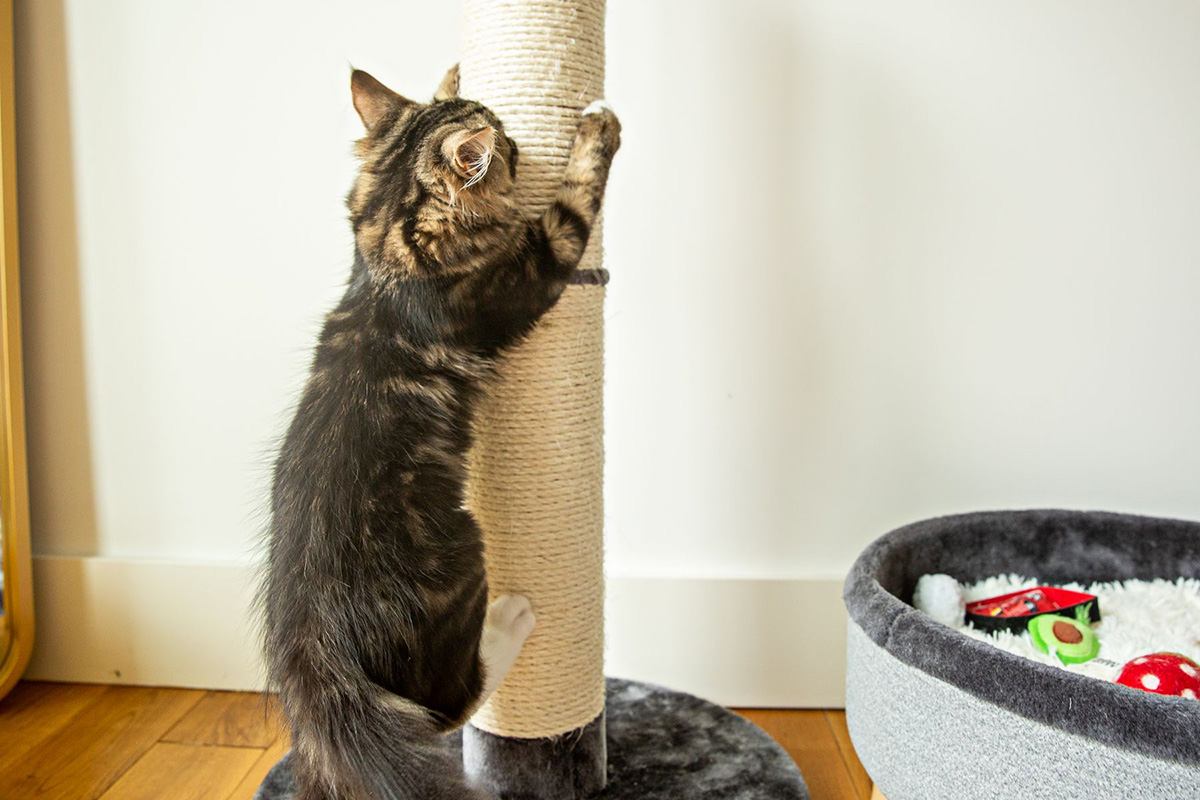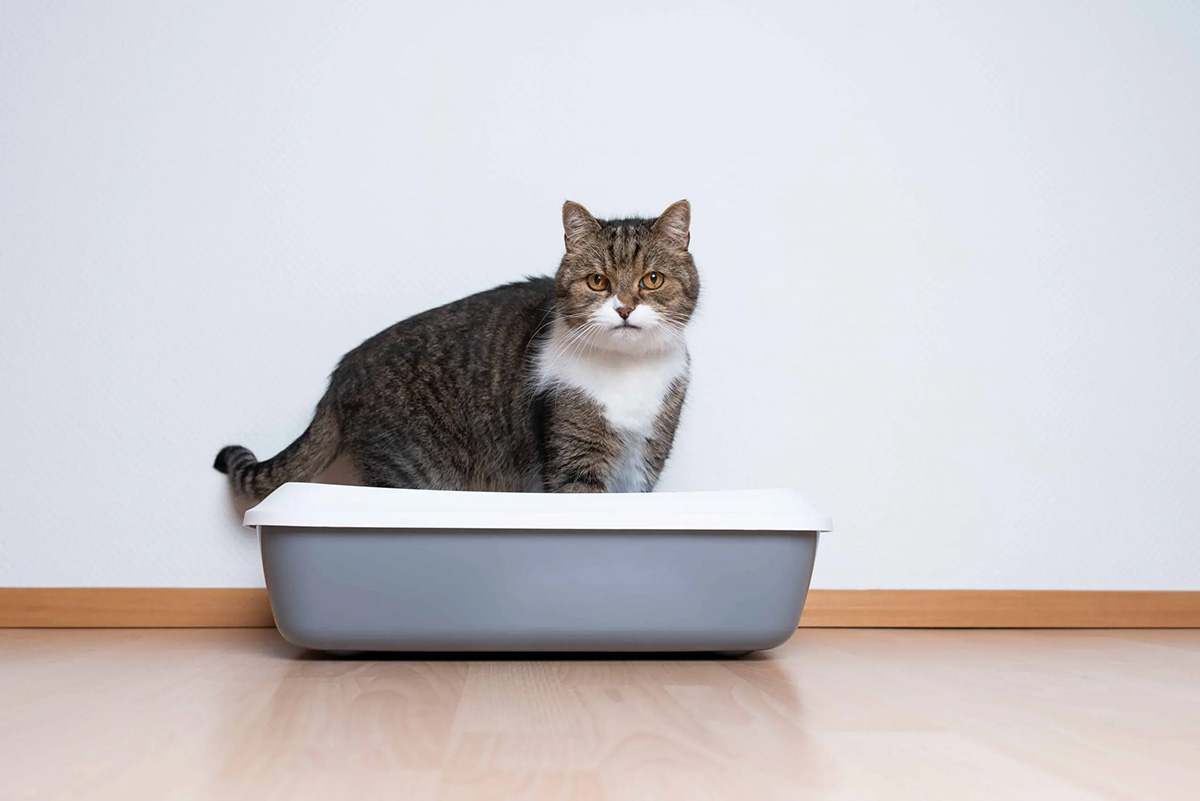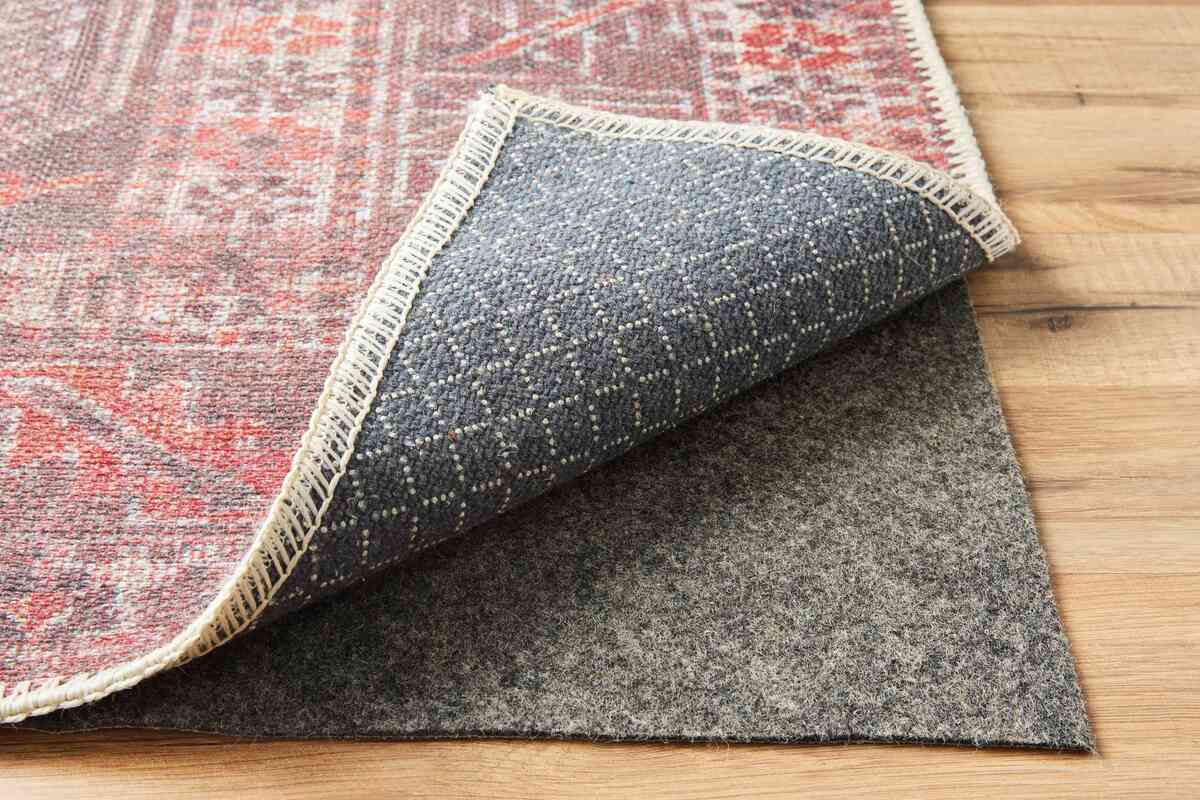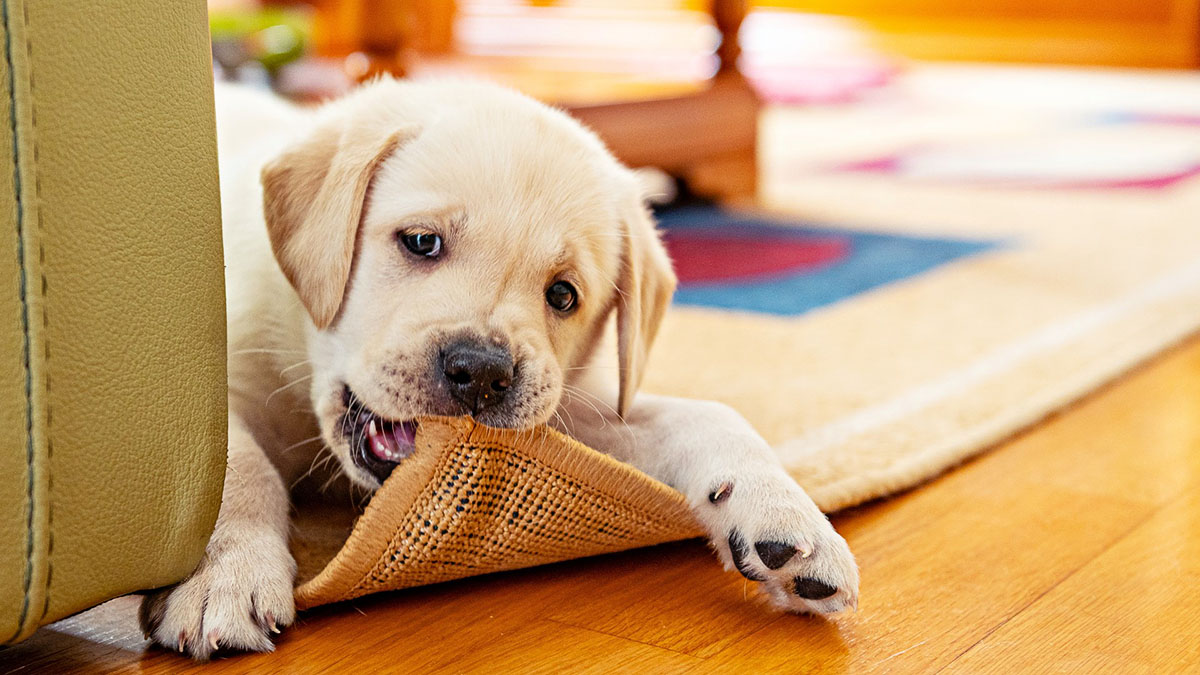

Articles
How To Stop Dog From Eating The Carpet
Modified: February 28, 2024
Discover effective articles and tips on preventing dogs from eating the carpet. Put an end to this destructive behavior and keep your home clean and safe.
(Many of the links in this article redirect to a specific reviewed product. Your purchase of these products through affiliate links helps to generate commission for Storables.com, at no extra cost. Learn more)
Introduction
Welcome to our comprehensive guide on how to stop your dog from eating the carpet. If you’ve ever come home to find your precious carpet chewed up by your furry friend, you’re not alone. Many dog owners face this frustrating and costly issue. Not only can a dog’s carpet chewing habit damage your property, but it can also pose a risk to their health.
In this article, we will explore various strategies to help you address this behavior in a positive and effective manner. It’s important to remember that every dog is unique, and what works for one may not work for another. With patience, consistency, and the right approach, you can help your dog break their carpet chewing habit and establish more appropriate behaviors.
Let’s delve into the underlying reasons why dogs may develop this destructive behavior and what you can do to address it.
Key Takeaways:
- Understanding the reasons behind your dog’s carpet chewing behavior is crucial to addressing it effectively. From teething to anxiety, identifying the cause can guide your approach to curbing this destructive habit.
- Providing sufficient exercise, mental stimulation, appropriate chew toys, and positive reinforcement training are key strategies to redirect your dog’s chewing instinct away from the carpet. Consistency, patience, and professional guidance can lead to long-lasting results.
Read more: How To Stop My Dog From Peeing On My Carpet
Understanding the Reason behind a Dog Eating the Carpet
Before we can effectively address a dog’s carpet chewing habit, it’s important to understand the underlying reasons behind it. Dogs may engage in this behavior due to a combination of factors, including teething, boredom, anxiety, or a lack of appropriate outlets for their natural chewing instincts.
Teething: Just like human babies, puppies go through a teething phase where their gums may become sore and itchy. Chewing on objects, including carpets, provides relief for their discomfort. This behavior is more common in puppies and tends to subside as they mature.
Boredom: Dogs are social animals that require mental and physical stimulation. When they don’t receive adequate exercise or attention, they may resort to chewing as a way to release pent-up energy. If your dog is left alone for long periods without any form of entertainment, they may turn to the carpet as a source of amusement.
Anxiety: Dogs can experience anxiety and stress, which can manifest in various destructive behaviors, including carpet chewing. Separation anxiety is a common trigger for this behavior, as dogs may resort to chewing to alleviate their anxiety when their owners are away.
Lack of appropriate outlets: Dogs have a natural instinct to chew. Without suitable alternatives and proper guidance, they may direct their chewing behavior towards household items, such as carpets. Providing appropriate chew toys and engaging in regular playtime can help redirect their urge to chew.
By understanding why your dog is engaging in this behavior, you can tailor your approach and implement targeted strategies to address it. In the next sections, we will explore various techniques to help curb your dog’s carpet chewing habit.
Addressing Medical Issues
Before assuming that your dog’s carpet chewing habit is solely behavioral, it’s essential to rule out any underlying medical issues that may be causing discomfort or pain. Certain medical conditions, such as dental problems or gastrointestinal issues, can lead to increased chewing behavior.
If you notice your dog excessively chewing on the carpet or other objects, it’s advisable to consult with your veterinarian. They will conduct a thorough examination to check for any underlying health issues. In some cases, dental problems such as gum disease or tooth decay can cause discomfort, leading to increased chewing behavior.
Your vet may also recommend a specific diet or dietary supplements to address any digestive issues your dog may be experiencing. Sometimes, dogs may chew on carpets or other non-food items as a result of an upset stomach or dietary deficiencies.
Once any medical issues are addressed and proper treatment is implemented, you may see a decrease in your dog’s carpet chewing behavior. However, if the behavior persists, it’s important to explore other strategies to help redirect their chewing habits.
Now that we’ve addressed any potential medical concerns, let’s move on to the next section, which focuses on ensuring your dog gets sufficient exercise and mental stimulation.
Ensuring Sufficient Exercise and Mental Stimulation
Adequate exercise and mental stimulation are crucial for a dog’s overall well-being and can play a significant role in reducing carpet chewing behavior. Dogs have natural instincts and energy levels that need to be channeled in a productive way. When they don’t receive enough physical and mental stimulation, they may resort to destructive behaviors like chewing.
Here are some strategies to ensure your dog gets sufficient exercise and mental stimulation:
- Regular Exercise: Take your dog for daily walks, play fetch in the park, or engage in other physical activities that match their energy level and breed traits. Aim for at least 30 minutes to an hour of exercise each day to tire them out physically.
- Mental Stimulation: Dogs also require mental stimulation to keep them engaged and prevent boredom. Incorporate interactive toys, puzzle feeders, and games that challenge their problem-solving skills. Basic obedience training can also provide mental stimulation and help redirect their focus away from chewing the carpet.
- Enriching Environment: Create an enriching environment for your dog by providing a variety of toys and activities. Rotate their toys to keep them engaged and introduce new toys or games periodically. Consider using treat-dispensing toys or frozen stuffed Kongs to keep them occupied and mentally stimulated.
- Playdates and Doggy Daycare: Social interaction with other dogs can provide mental and physical stimulation. Schedule playdates with other friendly and well-behaved dogs or enroll your dog in a reputable doggy daycare that offers supervised playtime with other dogs.
- Obedience Training: Training sessions not only help teach your dog basic commands but also provide mental stimulation and reinforce positive behaviors. Use positive reinforcement techniques, such as treats and praise, to reward good behavior and redirect their attention from chewing inappropriate objects.
By incorporating regular exercise and mental stimulation into your dog’s routine, you can help channel their energy in a positive way and reduce their desire to chew on the carpet. In the next section, we will discuss the importance of providing appropriate chew toys and alternatives for your dog.
Providing Appropriate Chew Toys and Alternatives
One effective way to curb your dog’s carpet chewing habit is by providing them with appropriate chew toys and alternatives. Dogs have a natural instinct to chew, and by offering them suitable items to satisfy their chewing needs, you can redirect their attention away from your precious carpets. Here are some tips on providing chew toys and alternatives:
- Choose Durable and Safe Chew Toys: Opt for sturdy and durable chew toys that are designed specifically for heavy chewing. Look for toys made of durable materials like rubber or nylon that can withstand your dog’s chewing strength.
- Texture and Flavor Variety: Dogs have preferences for different textures and flavors. Experiment with different types of toys to determine what appeals to your dog the most. Some dogs may prefer softer toys, while others may enjoy harder rubber toys for more challenging chewing.
- Interactive Toys: Consider interactive toys that dispense treats or make sounds. These toys not only satisfy your dog’s chewing instinct but also provide mental stimulation and keep them engaged for longer periods.
- Frozen Treats: Freeze peanut butter or healthy dog-friendly treats in a Kong or similar toy. This not only provides a tasty reward but also serves as a soothing and long-lasting chew for your dog.
- Rotate Toys: Keep your dog engaged by rotating their toys every few days. This keeps the toys exciting and prevents boredom from setting in. Limiting access to certain toys can also increase their novelty and appeal.
- Encourage Chewing on Alternatives: Teach your dog what is appropriate to chew on by redirecting their attention to acceptable alternatives. Whenever you catch them chewing on the carpet, gently interrupt the behavior and offer them a chew toy or appropriate chew alternative.
Remember, it may take some time for your dog to learn what is acceptable to chew on. Consistency and positive reinforcement are key to success. Whenever they chew on their toys or alternatives, praise and reward them to reinforce the desired behavior.
In the next section, we will explore positive reinforcement training as a valuable tool to help stop your dog from chewing the carpet.
Provide plenty of appropriate chew toys and bones to redirect your dog’s chewing behavior away from the carpet. Supervise and correct the behavior consistently to reinforce the desired behavior.
Read more: Why Is My Dog Eating The Carpet
Implementing Positive Reinforcement Training
Positive reinforcement training is a powerful tool for addressing unwanted behaviors, including carpet chewing, in dogs. This training approach focuses on rewarding and reinforcing desired behaviors, rather than punishing or scolding them for their mistakes. Here are some steps to implement positive reinforcement training to help stop your dog from chewing the carpet:
- Identify the Trigger: Observe your dog’s behavior and try to identify what triggers their carpet chewing. It could be boredom, anxiety, or simply the texture of the carpet. Understanding the trigger will help you address the root cause of the behavior.
- Redirect and Replace: When you catch your dog chewing on the carpet, calmly interrupt the behavior and redirect their attention to an appropriate chew toy or alternative. Encourage them to engage with the desired item instead.
- Positive Reinforcement: When your dog chews on their toy or alternative, offer praise, treats, or affection as a reward. Make it clear to them that chewing on the designated items is the desired behavior. This positive association will encourage them to choose the appropriate chew items over the carpet.
- Consistency is Key: Be consistent with your training approach and rewards. Dogs thrive on routine and repetition, so it’s important to provide clear and consistent feedback. Reward them every time they choose the designated chew item and avoid accidentally reinforcing the carpet chewing behavior.
- Supervision and Management: Supervise your dog when they have access to the carpet, especially during the initial stages of training. If you can’t directly supervise, confine them to a dog-proofed area or use baby gates to limit their access. This prevents them from practicing the unwanted behavior and strengthens the desired chewing habits.
- Seek Professional Guidance: If the carpet chewing behavior persists or becomes more severe, consider consulting with a professional dog trainer or behaviorist. They can provide expert guidance tailored to your dog’s specific needs and help address any underlying issues contributing to the behavior.
Positive reinforcement training takes time and patience but can yield long-lasting results. By focusing on rewarding desired behaviors and providing appropriate alternatives, you can effectively redirect your dog’s chewing instinct away from the carpet. In the next section, we will discuss the use of deterrents and bitter sprays as additional tools to discourage carpet chewing.
Using Deterrents and Bitter Sprays
In addition to positive reinforcement training, using deterrents and bitter sprays can be effective in discouraging your dog from chewing the carpet. These products create an unpleasant taste or scent that dogs find off-putting, helping to deter them from engaging in the unwanted behavior. Here’s how you can use deterrents and bitter sprays:
- Choose the Right Product: Look for a pet-friendly deterrent or bitter spray specifically formulated for dogs. These sprays are generally safe to use and won’t cause harm to your dog or damage your carpet. Read the instructions carefully before use.
- Apply on the Carpet: Spray the deterrent or bitter spray on areas of the carpet that your dog usually chews. Focus on spots that have been previously targeted or areas where they are likely to engage in chewing behavior.
- Testing and Reapplication: Before applying the product extensively, do a patch test on a small and inconspicuous area of the carpet to ensure it doesn’t cause any discoloration or damage. If the spray is safe for your carpet, apply it generously on the desired areas. Reapply as directed on the packaging, as the sprays may wear off over time.
- Consistency and Reinforcement: While deterrents and bitter sprays can be effective, they work best when combined with positive reinforcement training. Use them as a tool to redirect your dog’s attention away from the carpet and reinforce the appropriate chewing behavior with praise and treats.
- Gradual Removal: As your dog learns to chew on appropriate items instead of the carpet, you can gradually reduce the use of deterrents and bitter sprays. Monitor their behavior closely and make sure they continue to make the right choices.
Note that using deterrents and bitter sprays is not a standalone solution. It is important to address the underlying causes of the carpet chewing behavior and provide appropriate alternatives for your dog to chew on. These sprays act as additional tools to aid in the training process.
In the following section, we will discuss the benefits of consulting with a professional trainer or behaviorist to address persistent carpet chewing behavior.
Consulting with a Professional Trainer or Behaviorist
If your dog’s carpet chewing behavior persists despite your best efforts, seeking guidance from a professional trainer or behaviorist can be immensely beneficial. These experts are trained to understand dog behavior and can provide tailored advice and strategies to address the specific challenges you’re facing. Here’s how consulting with a professional can help:
- Expert Assessment: A professional trainer or behaviorist will conduct a thorough assessment of your dog’s behavior, taking into account factors such as their age, breed, temperament, and environment. This assessment helps diagnose any underlying issues contributing to the carpet chewing behavior.
- Individualized Training Plan: Based on their assessment, the professional will develop a customized training plan that addresses your dog’s specific needs and the triggers for their carpet chewing. They will provide step-by-step instructions and guidance on how to implement the plan effectively.
- Behavior Modification Techniques: A professional trainer or behaviorist can teach you various behavior modification techniques that are proven to be effective in curbing unwanted behaviors. These techniques may include desensitization, counter-conditioning, or relaxation exercises to help your dog overcome their chewing habit.
- Support and Guidance: Throughout the training process, a professional will provide ongoing support and guidance to ensure you are implementing the techniques correctly and making progress. They will address any concerns or challenges that may arise and adjust the training plan as needed.
- Professional Expertise: Professionals have experience working with dogs of different breeds and behavioral issues. They have a deep understanding of dog behavior and can provide insights and strategies that may not be readily available to a dog owner who is not trained in behavior modification.
- Continued Training and Follow-up: After the initial consultation, many professional trainers offer follow-up sessions or continued training programs to monitor your dog’s progress and provide ongoing support. This ensures that you have the necessary tools and knowledge to maintain the desired behavior in the long run.
Remember, consulting with a professional trainer or behaviorist should not be seen as a last resort, but rather as an investment in your dog’s well-being and your peace of mind. Their expertise and guidance can greatly increase the chances of success in modifying your dog’s carpet chewing behavior.
Now that we’ve explored various strategies to address carpet chewing behavior, let’s conclude our guide.
Conclusion
Dealing with a dog that chews on the carpet can be frustrating, but with the right approach, patience, and consistency, you can help your furry friend break this destructive habit. Understanding the reasons behind your dog’s carpet chewing, addressing any medical issues, and providing sufficient exercise and mental stimulation are essential steps in curbing this behavior.
By providing appropriate chew toys and alternatives, implementing positive reinforcement training, and using deterrents and bitter sprays, you can redirect your dog’s chewing instinct away from the carpet and towards more appropriate items. Consistency, reinforcement, and gradual removal of deterrence are key to success.
If your dog’s carpet chewing behavior persists or becomes more severe, consulting with a professional trainer or behaviorist can provide valuable insights and guidance tailored to your dog’s specific needs. Their expertise and support can greatly enhance the training process and help you address any underlying issues contributing to the behavior.
Remember, every dog is unique, and what works for one may not work for another. Be patient with your furry companion and make adjustments in your approach as needed. With time, consistency, and positive reinforcement, you can help your dog break their carpet chewing habit and establish more appropriate behaviors.
Now armed with these strategies, go forth and create a chew-friendly environment for your dog, redirect their chewing instincts, and enjoy a carpet-chewing-free home!
Frequently Asked Questions about How To Stop Dog From Eating The Carpet
Was this page helpful?
At Storables.com, we guarantee accurate and reliable information. Our content, validated by Expert Board Contributors, is crafted following stringent Editorial Policies. We're committed to providing you with well-researched, expert-backed insights for all your informational needs.
